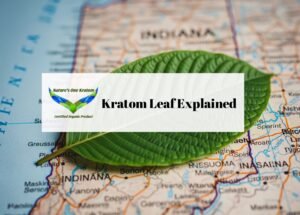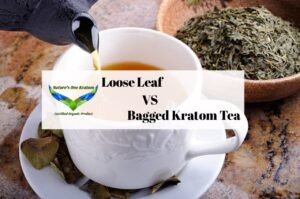No products in the cart.

In 2025, kratom (Mitragyna speciosa) is no longer a niche herbal supplement. From Indonesia’s booming exports to hot debates in U.S. states over new legislation, kratom is grabbing global headlines. What makes this botanical so compelling — and controversial? This deep dive explores the plant’s origins, benefits, risks, legal challenges, and why it’s becoming a viral subject this year.
The Roots of Kratom: Traditional Use in Southeast Asia
Native to Thailand, Malaysia, Myanmar, Papua New Guinea, Cambodia, and Indonesia, kratom leaves have been chewed and brewed for over two centuries. Local communities have long used it for energy, pain relief, appetite stimulation, and enhancing endurance during hard labor.
In 2024, Indonesia’s President Jokowi encouraged scientific research into kratom’s medicinal potential, particularly as a pain reliever. But despite this local interest, domestic sales remain restricted. According to the Trade Minister, kratom can only be exported — raw materials or processed powder under 600 microns — due to pending domestic regulations.
2025 Export Boom: Indonesia’s Kratom Goes Global
Indonesia is leading the way as a major kratom exporter. In March 2025, the government approved Ministerial Regulation No. 9/2025, strengthening export standards to improve quality and environmental sustainability.
On February 28, 2025, Indonesia shipped 351 tons of processed kratom (13 containers) worth US$1.053 million (~Rp17.45 billion) to markets in the U.S. and Europe. In 2023, the U.S. alone imported 4,694 tons, contributing US$9.15 million — with Jakarta accounting for over 60% of export value.
Growing Pains: Regulation and Legal Battles
Despite export momentum, kratom faces regulatory uncertainty worldwide. Here’s an overview of recent developments:
- Indonesia: Kratom hasn’t been legalized domestically; regulatory bodies like BNN and the Ministry of Human Rights await conclusive studies before classifying it as narcotic .
- United States: Legality varies by state. New bills, such as Connecticut’s HB 6855, aim to schedule kratom as a controlled substance — lumping it with harmful synthetics, even though natural leaf hasn’t caused major harm . Similarly, Texas saw unregulated brands (e.g., “7‑Hydro”) sold in convenience stores, triggering calls for stricter regulation. Texas may move to ban kratom entirely (Senate Bill 1868) — sparking community backlash online .
- Europe: Some countries, including Greece, imposed outright bans on kratom in March 2025 (ΦΕΚ Β 1067/10 March 2025). However, others like Czechia are prepping regulatory frameworks that may allow controlled kratom sales by mid-2025.
- Colorado (USA): Proposed bills on kratom regulation are also in discussion, reflecting the patchwork of state-level governance.
- Georgia (USA): Passing a 2024 law banning sales to under-21, mandating labeling and concentration limits, and restricting shelf placement.
Kratom’s Biochemistry: What Makes It Tick
Kratom’s effects stem from a group of alkaloids — notably mitragynine and 7-hydroxymitragynine — that activate opioid receptors, producing complex outcomes ranging from stimulating to sedative depending on dosage :
- Low doses (1–5 g): Amplify energy, alertness, sociability; side effects include nausea, sweating, constipation .
- Medium to high doses (5–15 g): Trigger opioid-like sedation, pain relief, drowsiness, respiratory depression risk .
- Safety concerns at higher potency include liver toxicity, seizures, psychosis, respiratory issues; about 2 deaths reported among 935 exposures in a 7-year U.S. review.
Balancing Benefits and Hazards
Many users report kratom helps with chronic pain, anxiety, and opioid withdrawal. One Redditor said:
“Kratom is the only reason I’m not begging for Percocet anymore, I was taking two a day…,”
Nevertheless, public health agencies caution its use:
- The FDA states there’s no clinical evidence of kratom’s safety or therapeutic value.
- The CDC & FDA have linked kratom to liver injuries, respiratory depression, and psychosis.
- Multiple states are banning it due to these concerns .
Viral Debate of 2025: Prohibition vs. Regulation
Kratom became a viral talking point in 2025 due to:
- Connecticut’s HB 6855 ruling to classify kratom as Schedule I — criticized as overreaching and legally weak.
- Greek ban announcement in March, triggering emotional discourse on Reddit regarding pain patients losing access .
- Texas legislative movement toward total ban via Senate Bill 1868 — mobilizing advocacy on both sides of the issue .
- Czechia’s upcoming regulated framework blending kratom and low-THC cannabis — representing a progressive approach.
These stories circulated widely across global forums, turning kratom into a trending subject in health and policy circles in 2025.
Conclusion
In 2025, kratom is not just a Southeast Asian botanical — it’s a global phenomenon entangled in export booms, legal scrutiny, and public health debate. Its rise in Indonesia’s export economy contrasts sharply with bans in states like Connecticut and Greece. Users tout its benefits for pain relief and addiction recovery, even as agencies issue warnings.
Related Articles








Add comment